 |
 |
 |
| |
Predicting maraviroc responses according to number or percentage of X4-using virus among treatment-experienced patients
|
| |
| |
Reported by Jules Levin
18th Conference on Retroviruses and Opportunistic Infections
February 27-March 2, 2011
Boston, MA, USA
J Heera,1 PR Harrigan,2 M Lewis,3 D Chapman,4
P Biswas,5 L Swenson,2 S Portsmouth,4 H Valdez4
1Pfizer Global Research and Development, New London, CT, USA; 2BC Centre for Excellence in HIV/AIDS, Vancouver, BC, Canada; 3Pfizer Global Research and Development, Sandwich, UK;
4Pfizer, Inc., New York, NY, USA; 5Pfizer, Inc., Collegeville, PA, USA
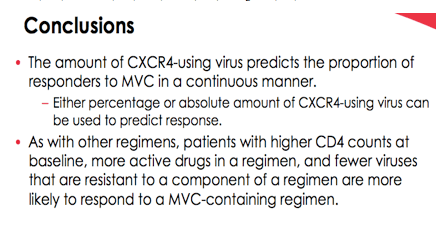
ABSTRACT
Background: MVC is an oral entry inhibitor active against R5 virus only as defined using qualitative phenotypic assays. Using ultra-deep sequencing, many patients have low levels of virus predicted to use CXCR4. It is unknown whether the number or the relative percentage of X4 virus is more important for predicting virologic responses to MVC.
Methods: Treatment-experienced patients who participated in the combined MVC arms MOTIVATE (R5 HIV by original Trofile, N=674) or A4001029 (non-R5 by original Trofile; N=214) trials were included in this analysis. The relative percentage of X4 virus was determined using ultra-deep sequencing (454/Roche) with g2p interpretation. Patients were classified as having R5 virus if non-R5 was <2%. The absolute number of X4 virus was estimated multiplying the screening viral load by %X4. Multivariate analysis and recursive partitioning were performed to identify predictors of response
(<50 copies/mL at Week 48) to MVC. Activity of the background regimen was determined using a weighted score.
Results: 889 patients were identified for analysis. Baseline characteristics are shown in the table. For analyses of responses the MVC QD and BID arms were combined.
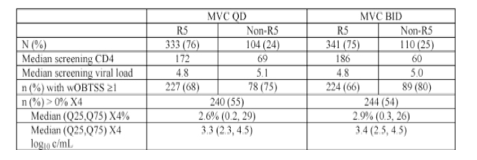
As the percentage of X4 increased (from <1% to >10%) the percentage of responders decreased (from 48.5% to 25%). Similarly, as the X4-specific viral load increased (from <1 to ≥4 log HIV copies/mL) the percentage of responders decreased (from 50% to 20%). The overall response was 42.6%; patients with >70 CD4 cells/μL, an OBT activity score of ≥1 fully active drug, and <5300 X4 copies/mL had a response of 65%, increasing to 71% if baseline CD4 was ≥164, comparable to the response in treatment-naive patients. X4% did not add information to predict virologic response in this model. In multivariate analysis, screening CD4, number of active drugs and absolute X4 viral load (but not percentage of X4 virus) were independent predictors of response. For early (Week 8) responses, screening CD4, number of active drugs, percent X4 and absolute X4 viral load were predictive of a response.
Conclusion: Baseline CD4+ cells, the activity of background drugs and the absolute X4 viral load as calculated by ultra-deep sequencing are independent predictors of long-term MVC responses.
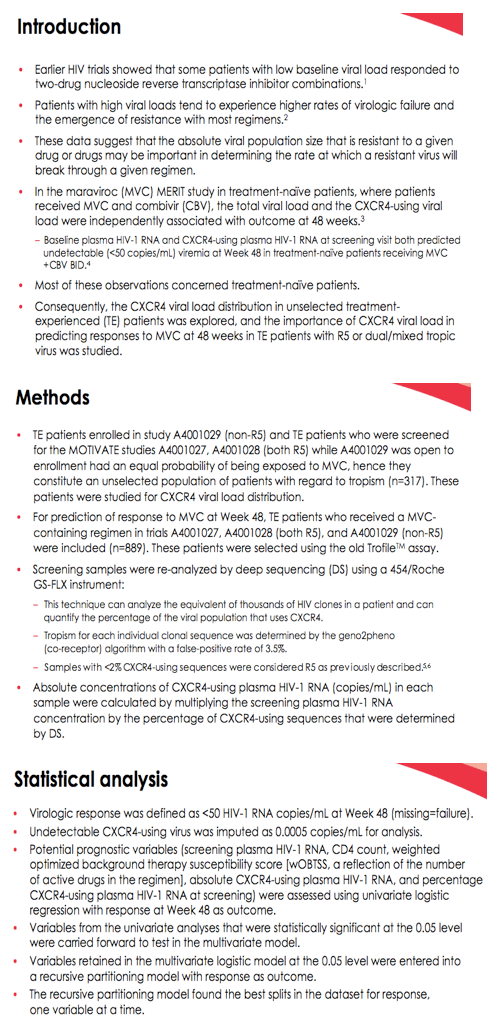
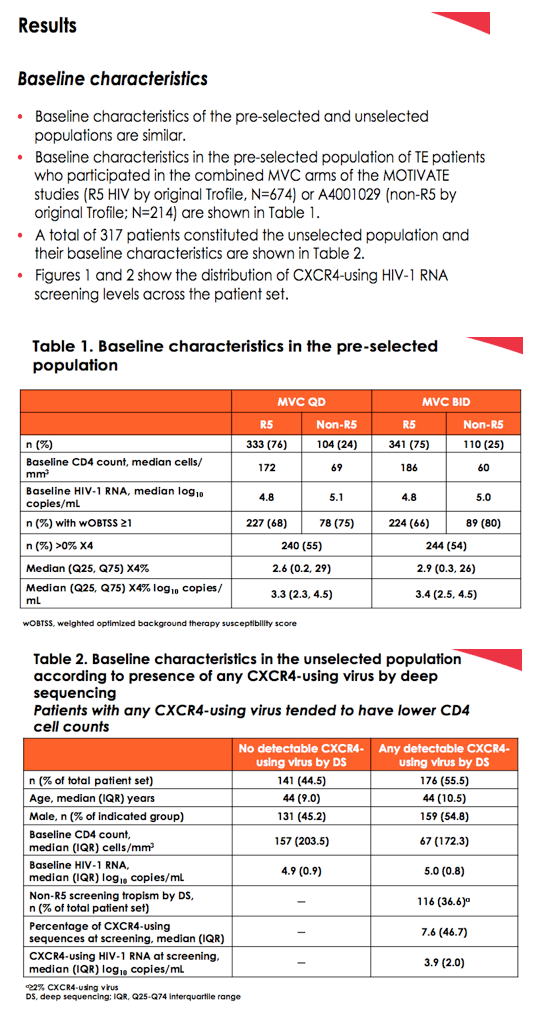
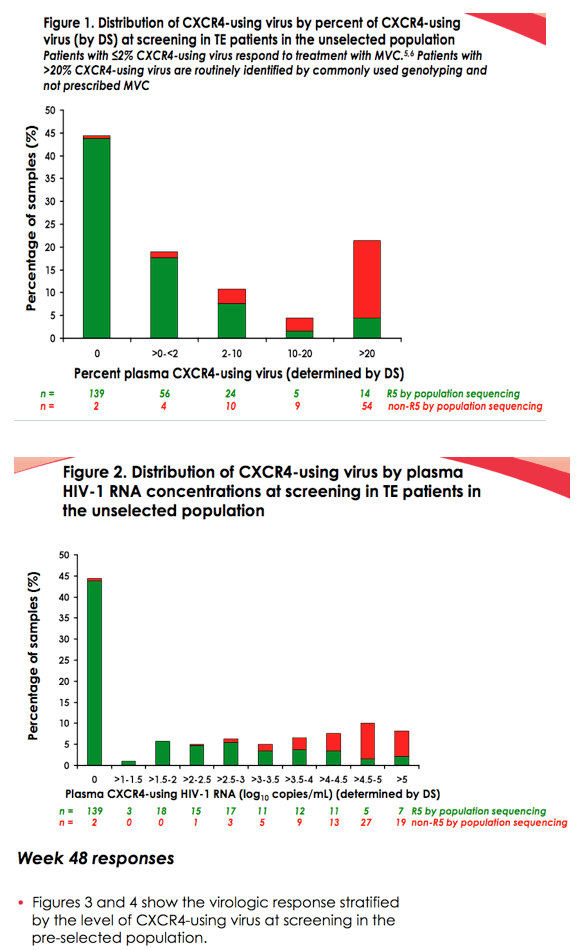
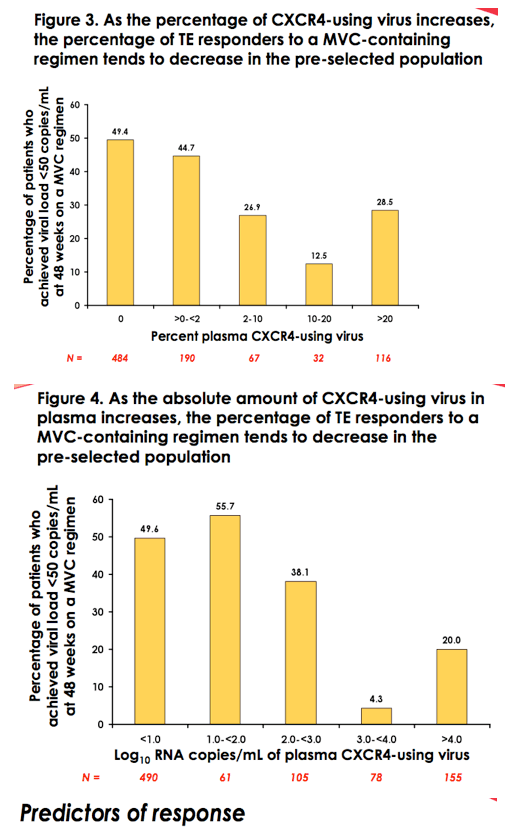
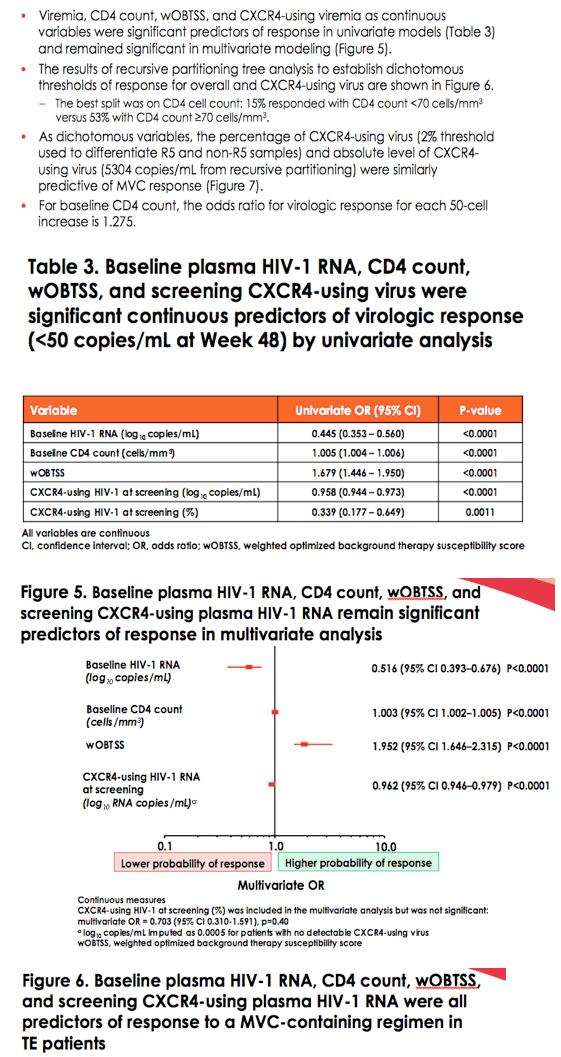
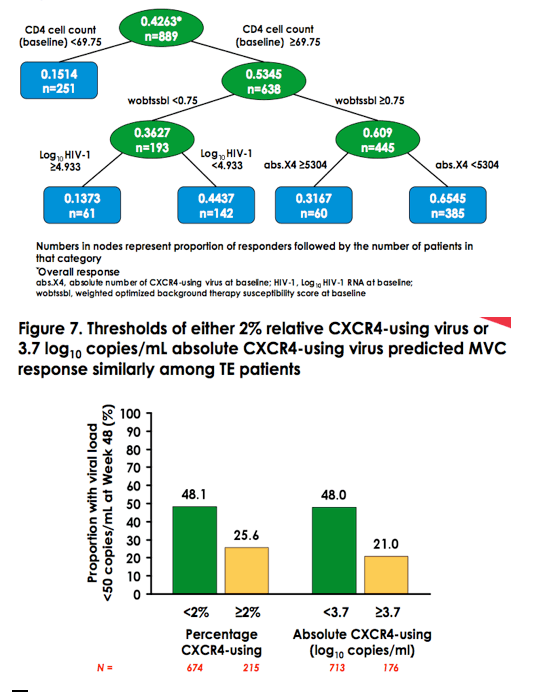
|
| |
|
 |
 |
|
|